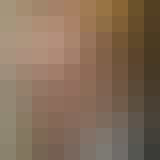In this class you will learn the basic principles and tools used to process images and videos, and how to apply them in solving practical problems of commercial and scientific interests. Digital images and videos are everywhere these days – in thousands of scientific (e.g., astronomical, bio-medical), consumer, industrial, and artistic applications. Moreover they come in a wide range of the electromagnetic spectrum - from visible light and infrared to gamma rays and beyond. The ability to process image and video signals is therefore an incredibly important skill to master for engineering/science students, software developers, and practicing scientists. Digital image and video processing continues to enable the multimedia technology revolution we are experiencing today. Some important examples of image and video processing include the removal of degradations images suffer during acquisition (e.g., removing blur from a picture of a fast moving car), and the compression and transmission of images and videos (if you watch videos online, or share photos via a social media website, you use this everyday!), for economical storage and efficient transmission. This course will cover the fundamentals of image and video processing. We will provide a mathematical framework to describe and analyze images and videos as two- and three-dimensional signals in the spatial, spatio-temporal, and frequency domains. In this class not only will you learn the theory behind fundamental processing tasks including image/video enhancement, recovery, and compression - but you will also learn how to perform these key processing tasks in practice using state-of-the-art techniques and tools. We will introduce and use a wide variety of such tools – from optimization toolboxes to statistical techniques. Emphasis on the special role sparsity plays in modern image and video processing will also be given. In all cases, example images and videos pertaining to specific application domains will be utilized.
Filtering in the Spatial Domain

Loading...
Skills You'll Learn
Image Processing, Data Compression, Matlab
Reviews
4.6 (1,720 ratings)
- 5 stars71.68%
- 4 stars22.03%
- 3 stars4.59%
- 2 stars0.98%
- 1 star0.69%
NS
Jul 17, 2018
Very informative and comprehensive course in image processing. Many examples are presented throughout the course, which make the content tangible and help to better sink-in the material.
PK
May 9, 2017
This course was amazing. And to be very honest I learnt a lot from this. The content and tutorial was very good and it proved to be very helpful in taking my works.
From the lesson
Signals and Systems
In this module we introduce the fundamentals of 2D signals and systems. Topics include complex exponential signals, linear space-invariant systems, 2D convolution, and filtering in the spatial domain.
Taught By
Aggelos K. Katsaggelos
Joseph Cummings Professor

